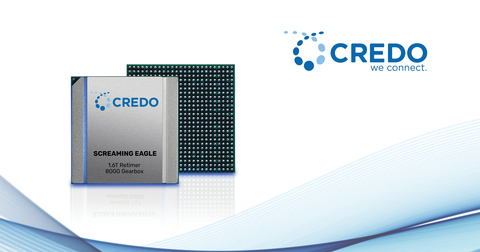
SAN JOSE, Calif.– Credo (NASDAQ: CRDO) today announced the Screaming Eagle 112G LR (Long Reach) DSP device with 1.6 Terabits per second (Tbps) of retiming capacity. By supporting port speeds of 1.6T, 800G, 400G, 100G and down to 10G – Screaming Eagle can satisfy the massive data transit requirements of hyperscalers, enterprises, 5G carriers and service provider customers.
“Bandwidth is the catalyst for the digital economy and our end customers need increasing amounts of network speed to support the broad range of data hungry, vertical markets,” said Scott Feller, Vice President of Marketing at Credo. “Credo’s unique SerDes design approach enables us to deliver industry-leading performance, energy efficiency, and a cost advantage to our customers – such as the Hyperscalers – who are managing petabytes of information. Delivering 1.6 Tbps capacity is a necessity as this appetite for networking speeds continues to grow.”
Screaming Eagle is a third generation Credo 112G retimer and supports LR+ channels of 40dB+, enabling up to 1.6Tbps throughput in a single package. It adds a programmable MR (medium reach) mode to reduce SerDes power by 20% for C2M (chip-to-module) and VSR (very short reach) applications. Screaming Eagle 1.6T ships in a 23x23mm package, the industry’s smallest form factor for line card applications.
“Data connectivity is no longer just the backbone for the Internet, it has become a critical factor in supporting complex data workloads and analytics for a variety of industries including healthcare, scientific research, finance, government, and manufacturing,” said Alan Weckel, Principal at the 650 group. “Credo’s entry to the 1.6Tbps race, with long reach capability, is timely as we see immense amounts of data being collected continuously by an array of industrial applications that are driving the need for increased compute, at higher speeds with lower latencies.”

